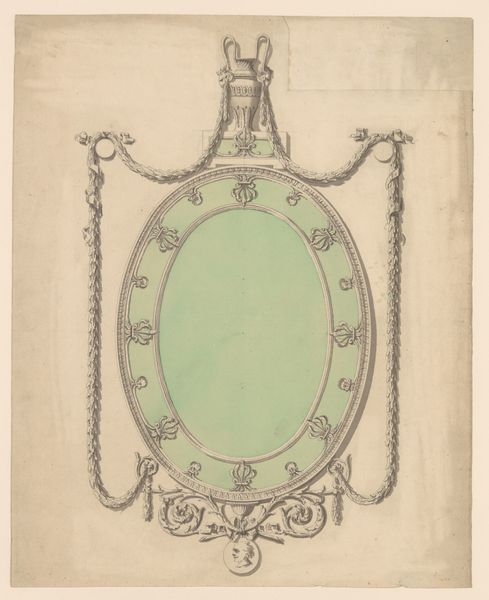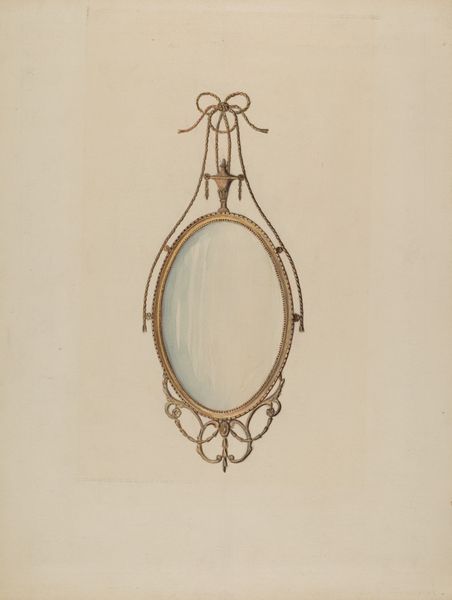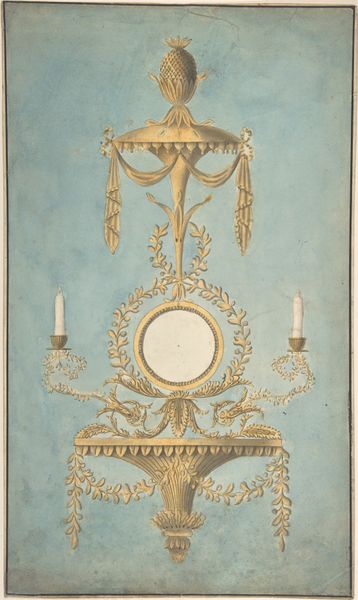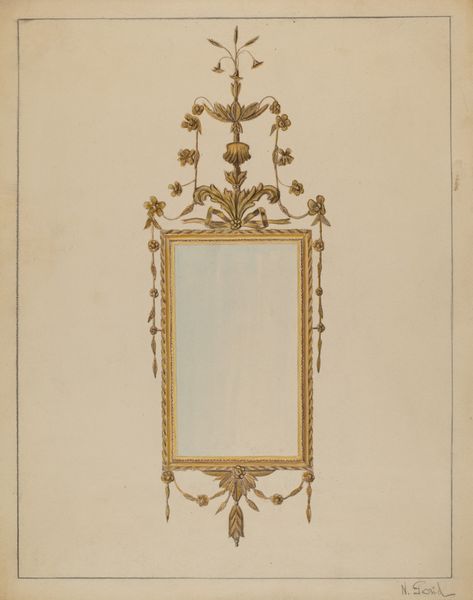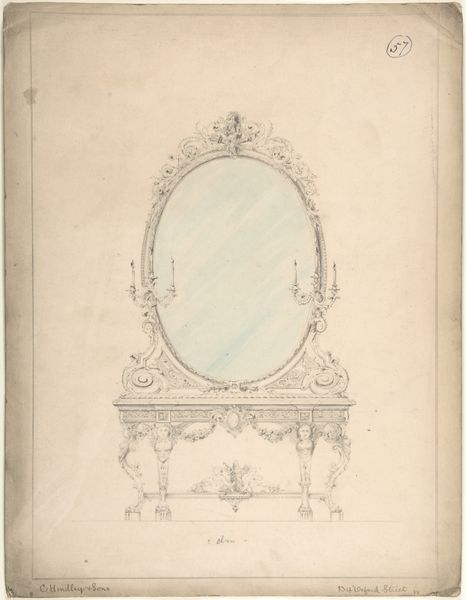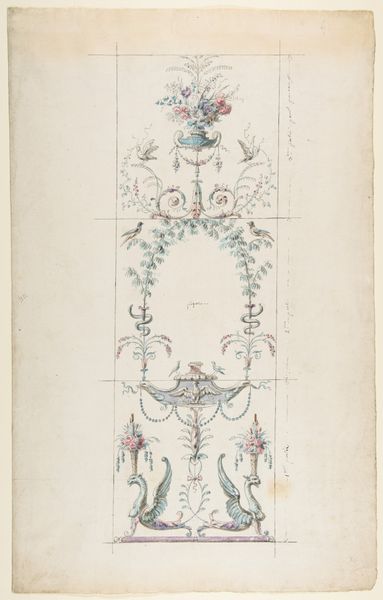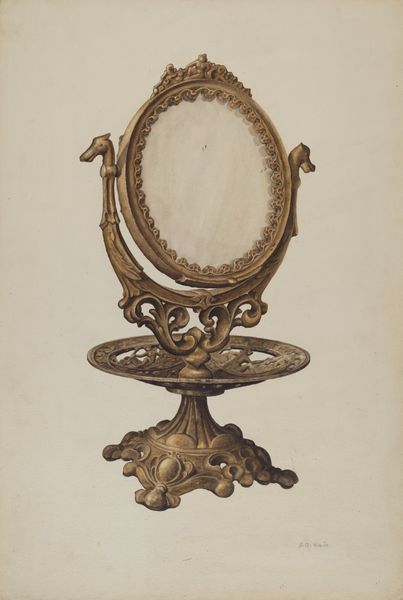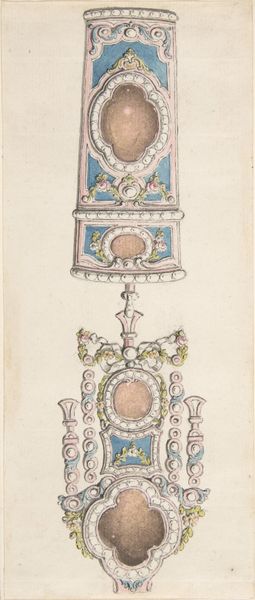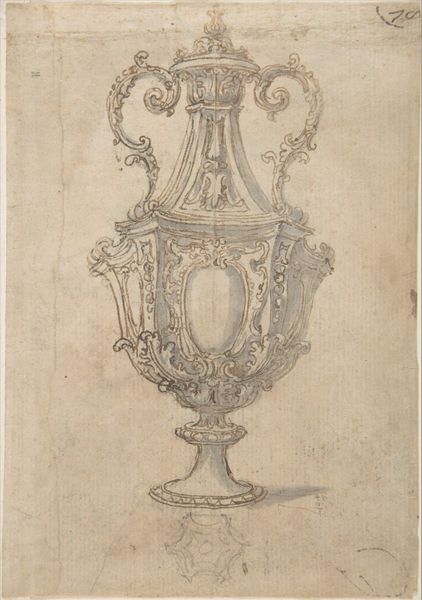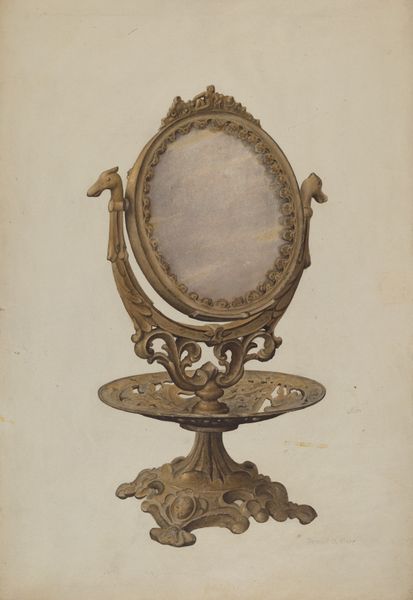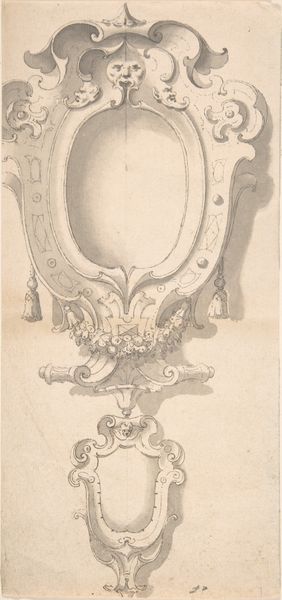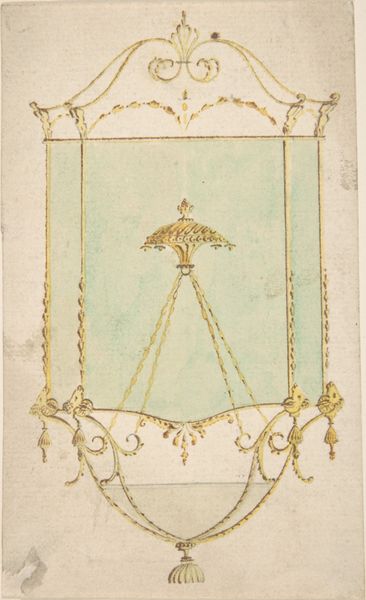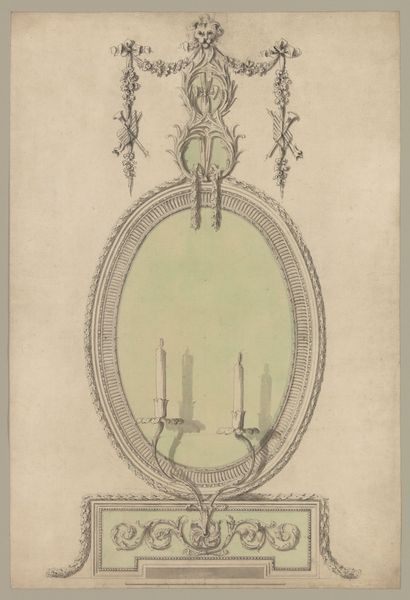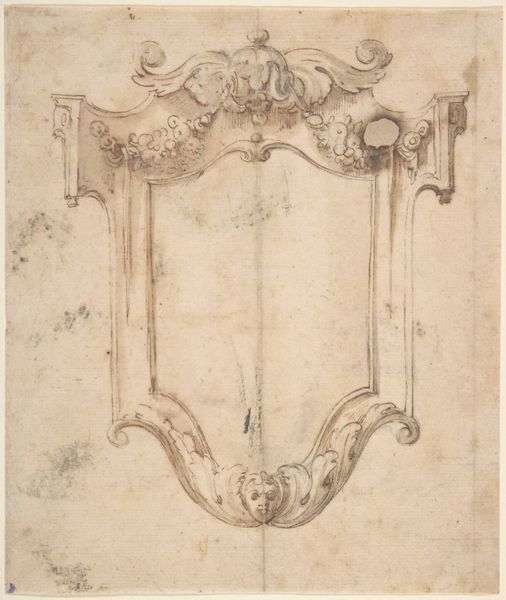
Design for a Girandole with a Circular and Oval Glass 1745 - 1800
0:00
0:00
drawing, coloured-pencil, print, paper, watercolor
#
drawing
#
neoclacissism
#
coloured-pencil
# print
#
curved letter used
#
paper
#
form
#
watercolor
#
coloured pencil
#
line
#
decorative-art
Dimensions: sheet: 15 3/4 x 9 1/16 in. (40 x 23 cm)
Copyright: Public Domain
Curator: Oh, isn't this drawing charming? A Design for a Girandole with a Circular and Oval Glass, likely created by Sir William Chambers between 1745 and 1800. Editor: My initial thought? Elegant, almost airy. It’s that delicate pastel palette – soft blues and pinks against the gilded frame. It’s all very Rococo fantasy meets Neoclassical order. Curator: Precisely! Chambers was a master of both styles. Notice how he marries the flowing lines and ornate details with a sense of balanced symmetry. It’s a design, so functionality takes a back seat to visual harmony. I imagine the finished product, the actual girandole, sparkling in some grand salon. Editor: And I see the subtle propaganda of class. Light wasn’t just light; it was a symbol of wealth, power, and access. This wasn’t illuminating a worker’s cottage; it was announcing, "We have so much disposable income we can reflect it back at ourselves with elaborate candle holders!" Who did this serve, and at whose expense? Curator: A fair point, always essential to remember the broader socio-economic picture. But within its context, there's ingenuity in its construction. See the entwined, stylized leaves evoking a sort of classical flourish but with the intention to reflect light via glass elements. What feelings does it evoke in you? Editor: Longing, actually. Not for opulence, but for… intentionality. Everything here, from the placement of the candlesticks to the shape of the glass, serves a purpose in the overall design. Contemporary design often lacks that cohesive vision; the work does something without anything backing the action. Now, it looks almost radical by standing as resistance against thoughtless modernity. Curator: Ah, a sentiment I understand all too well! It's funny how designs intended to embody a specific era can suddenly speak to completely different concerns centuries later. Editor: Yes! By looking at the history, we can be both more critical and more imaginative as designers ourselves. It can spark both a vision of a future for our people by knowing the past of others, by understanding why this artist may have created this. Curator: A beautiful thought to end on! This girandole—a testament to artistic intention and a gentle call to be a more present world designer.
Comments
No comments
Be the first to comment and join the conversation on the ultimate creative platform.
